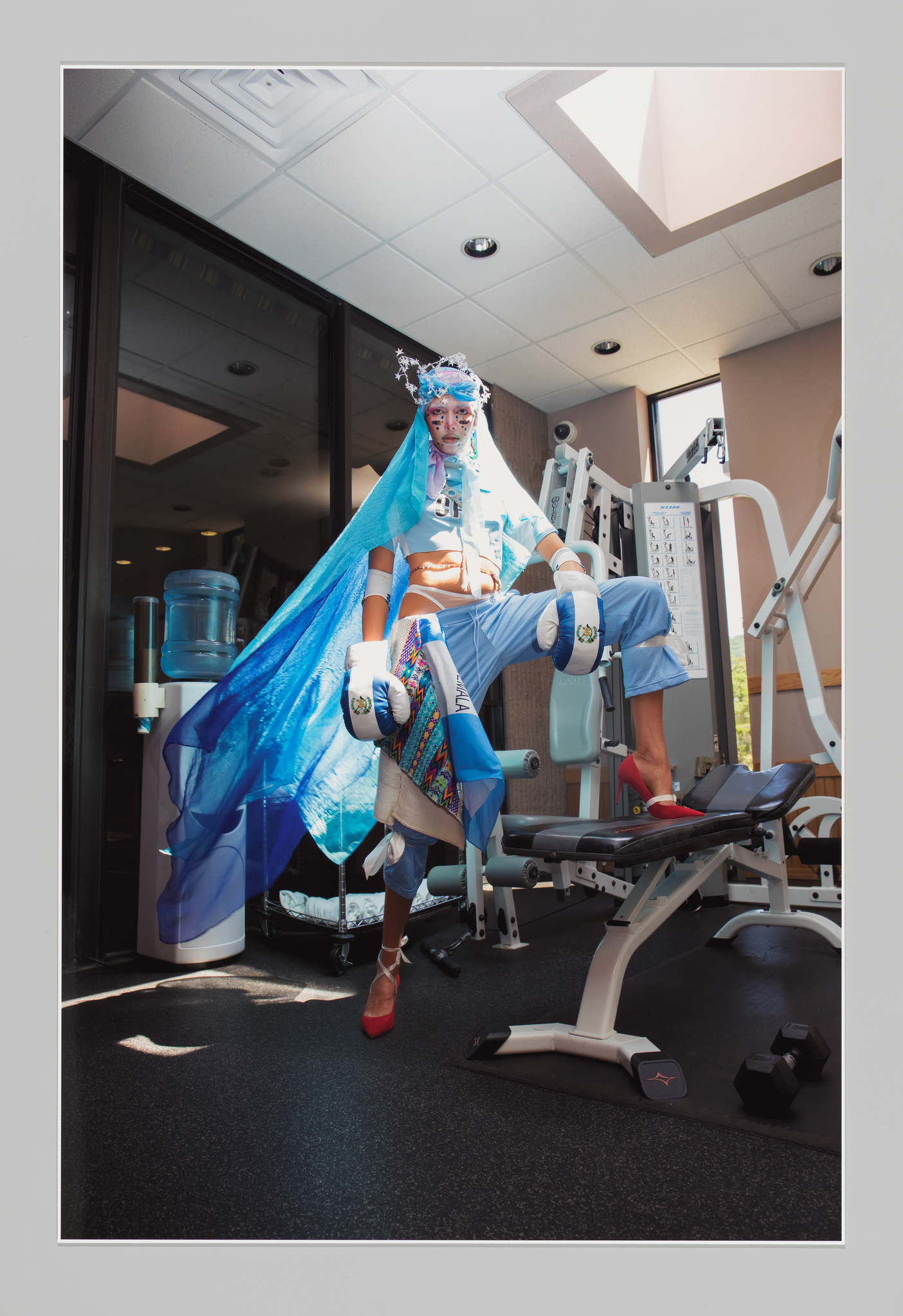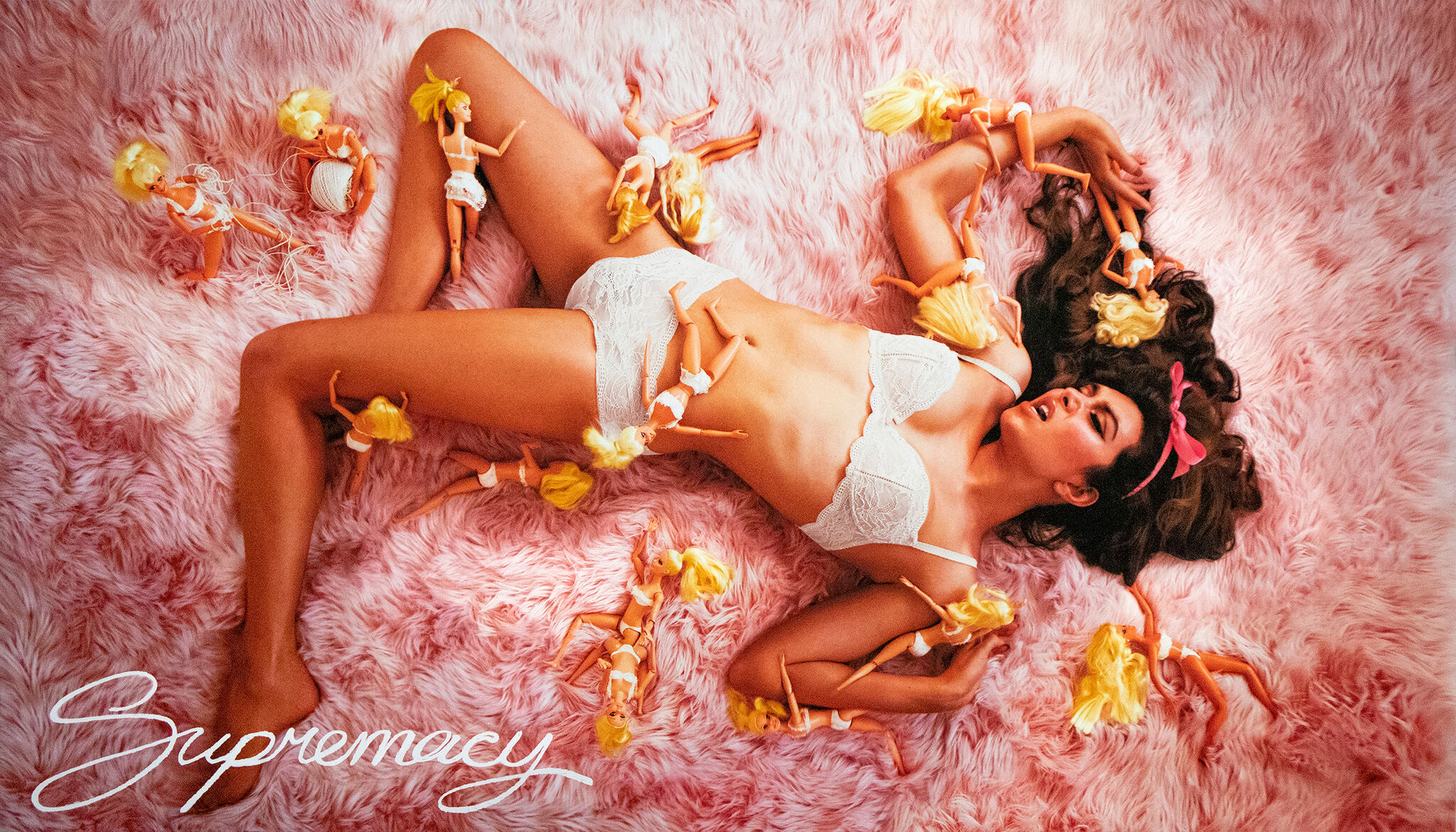Verbal Description: Martine Gutierrez, Supremacy
Sept 20, 2021
0:00
Verbal Description: Martine Gutierrez, Supremacy
0:00
Narrator: This billboard, measuring 9.5 feet tall by 15 feet wide, is displayed on the facade of a building facing north, across from the end of the High Line, above the store Intermix. It is about the size of a small movie theater screen.
The image, which is a photograph by the artist Martine Gutierrez, consists of a light brown-skinned feminine model lying on a soft, pink, fuzzy ground. The figure’s half-bent arms and legs radiate away from her torso, which is clad in a frilly, white, lace bra and underwear set. A pink bow wraps around a head of cascading dark brown hair.
While the central model figure takes up the majority of the work, she is surrounded and covered by sixteen smaller figures, also in white lingerie, but these seem to have puffs of blond hair, and, upon further inspection, they become legible as Barbie dolls. One wedges itself inside the crook of the model’s knee, and another appears to have a plastic arm outstretched, tugging at strands of long brown hair. The dolls, along with the text, turn what in passing may look like a commercial fashion billboard into a menacing tableau. In the upper left, two Barbies unspool a skein of thin, white thread that matches the lingerie and one other key component of the work.
In the lower left quadrant of the composition, the word “Supremacy” sprawls horizontally in script fit for an autograph or concert tour, with letters consisting of thin lines evoking the threads above. The font seems to contradict the meaning of the word, whose message disrupts an otherwise alluring image, inviting us to scrutinize the scene.
With this billboard, Gutierrez intended to recall early-2000s reality shows like America’s Next Top Model, and the person in this photo is the artist herself. Here, she uses the language of advertisements to expose how companies are complicit in reproducing ideals anchored in white supremacy. The artist, who is transgender, also challenges gender-normative beauty stereotypes. An accompanying museum text by curator Marcela Guerrero, which can be found at whitney.org, reads: “In an era of hyper pop-politics circulated by social media where anything can be commodified, can a brand actually be an ally in the fight for liberation?”


